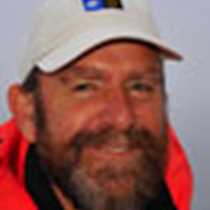At Sea – Drake Passage
After our epic migrations over the last two days to reach Fin del Mundo (the “End of the World,” Ushuaia, at the southernmost tip of South America), it was a relief at last to board the National Geographic Explorer and fall into our bunks. As we slept, she steamed east along the Beagle Channel and then south into the open ocean. Through strange dreams we felt the heave of the sea as the ship began to punch through the notorious swells off Cape Horn and out into the Drake Passage. Now 600 miles of emptiness are the final hurdle before we can reach our destination: Antarctica.
After breakfast this morning, we came up to the lounge to meet the diverse staff who will be leading this expedition, a motley crew of Zodiac drivers, naturalists, oceanographers, geologists, photographers, biologists, and film-makers, with a collective expertise that covers decades of polar experience.
In mid-morning, Steve Maclean gave us a fine account of the dynamics of the Southern Ocean, how the winds spiraling out from the South Pole create ocean currents, how the currents create upwellings which power the rich food web, and how the final separation of Antarctica from the other southern continents allowed these circumpolar currents to isolate Antarctica sufficiently for it to freeze over.
After lunch Ian gave a talk on the seabirds in the southern Ocean, and how they manage to be so completely at home in an environment which would kill any of us in minutes. Once the talk was over we went straight out onto the stern deck to see the stars themselves - the sun came out and lit up a dancing ocean, perfect conditions to witness a spectacular flypast of seabirds: tiny prions, flicking silver and grey acrobats which feed on planktonic copepod swarms in the surface waters, racing squadrons of spangled black and white Pintado Petrels passing at eye level, and more. A lone southern fulmar cruised past, a white-chinned petrel swept low over our wake, and to our delight a single Light-mantled Sooty Albatross swung by right above our heads. One of the most elegant and least-seen of albatrosses, this was a real treat. To complete the cavalcade, we had several Black-browed Albatross, a few Grey-headed Albatross and to finish the show, a white phase Southern Giant Petrel, gleaming snowy white in the sunshine, which repeatedly swept up under our stern, took a bow, then banked away over our turquoise wake to applause from all present.
Those who had tried to capture all this on film came back inside to thaw out at 5 and listen to an inspiring talk from Carlos Navarro, our resident photographer, who gave all present a string of tips on how to get the best of nature photography from our cameras.
Our day was complete at 7.15 as Lisa, Expedition Leader announced that we had crossed the Convergence, the cold water ecological boundary which defines Antarctica. There is no turning back now; the white continent awaits!



